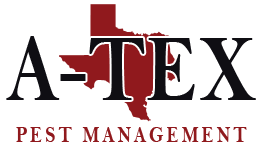Pigeons, often referred to as “rock doves,” have been sharing our urban landscapes for centuries. While they are ubiquitous, their behavior and biology play crucial roles in determining the most effective strategies for pigeon control. Today, we at A-Tex Pest Management would like to discuss the pigeon’s behavior and biology to help you better control them.
1) Social Structure & Nesting Habits
Pigeons are highly social birds that thrive in large groups. They exhibit a strong flocking instinct, and their colonies can range from a few individuals to thousands. Nesting habits vary, but pigeons commonly seek out ledges, rooftops, and other elevated surfaces for their nests. Understanding these preferences is fundamental to implementing effective control measures.
2) Pigeon Reproduction & Life Cycle
Pigeons are prolific breeders, with a short incubation period of around 17 to 19 days. A pair of pigeons can produce multiple broods in a year, contributing to their rapid population growth. Juvenile pigeons, known as squabs, are cared for by both parents until they are ready to fledge. Awareness of their reproductive cycle is essential for controlling population growth.
3) Intelligence & Adaptability of Pigeons
Pigeons are remarkably intelligent birds. They have the ability to recognize landmarks and navigate over long distances, a trait that has been exploited for centuries, especially during times of war. This intelligence also makes them adaptable to various environments, allowing them to thrive in both urban and rural settings.
4) Pigeon Feeding Behavior
Pigeons are opportunistic feeders with a diverse diet. While they primarily consume seeds, grains, and fruits, they are known to scavenge for food in urban environments. This scavenging behavior often brings them into direct contact with human activities, leading to conflicts over resources.
5) Communication & Vocalization of Pigeons
Pigeons communicate through a combination of coos, gestures, and body movements. Their distinctive cooing sounds are not just a form of communication but also play a role in courtship rituals. Understanding these communication methods is crucial for interpreting pigeon behavior and devising effective control strategies.
6) Pigeon Roosting Patterns
Pigeons are creatures of habit when it comes to roosting. Once they identify a suitable location, they are likely to return to it repeatedly. This behavior contributes to the persistence of pigeon-related issues in specific areas. Recognizing and disrupting these roosting patterns is key to successful pigeon control.
7) Pigeon Droppings & Health Risks
Pigeon droppings, while a nuisance, also pose health risks. Accumulated droppings can harbor pathogens, leading to the spread of diseases. Understanding the connection between pigeon behavior, roosting sites, and health hazards is vital for addressing public health concerns associated with pigeons.
Pigeon Pest Inspections, Treatment, Control, Removal & More in Austin, Round Rock, Leander, Pflugerville & Cedar Park Texas
A comprehensive understanding of pigeon behavior and biology is fundamental for developing effective and humane pigeon control strategies. By delving into their social structure, reproductive habits, intelligence, feeding behavior, communication methods, roosting patterns, and the associated health risks, we can tailor solutions that mitigate conflicts between pigeons and human environments. Balancing the need for control with an appreciation for the natural behaviors of these adaptable birds is key to fostering coexistence in our shared urban spaces. If you need help with pigeon control, call A-Tex Pest Management and let us assist you.










